What is a pyrgeometer?
Pyrgeometers are widely used to measure longwave radiation. But what exactly is longwave radiation? And why would anyone use a pyrgeometer? How do they work? This article answers the most common questions about pyrgeometers.

We start with a short explanation of longwave radiation. After that we list the most common uses of the sensor: meteorological (surface flux measurements), climatological and agricultural. Then, we explain how a pyrgeometer works with its different components. The article ends with an overview of the three types of pyrgeometers at Hukseflux. Not only do we provide the specifications of each type, but we also show you the design considerations and test results of the IR20 and IR20WS pyrgeometer, and explain which model to choose for different applications.
What is longwave radiation?
Pyrgeometers measure longwave radiation. As the name suggests, longwave radiation is radiation with long wavelengths. More specifically, it is called far-infra-red radiation. The wavelength of longwave radiation is typically between 4.000 and 50.000 nm (nanometers) long. Visible light has a wavelength between 380 and 750 nm.
What makes measuring longwave radiation different from only measuring sunlight? Longwave radiation is atmospheric radiation not emitted by the sun, but reflected from the earth’s surface, atmosphere and clouds. Because of this, the irradiance measurements are useful in many different applications. Longwave radiation can be divided into two parts. The radiation reflected from the atmosphere and clouds is called downward longwave radiation. There is also upward longwave radiation, which is reflected ‘upwards’ by the earth’s surface.
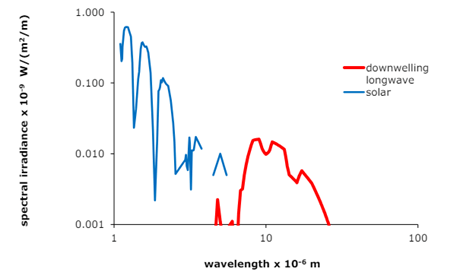
divided into downwelling longwave and solar radiation.
Looking at Figure 1, you can see that longwave and solar radiation occur at different wavelengths. A pyranometer can be used to measure the solar radiation, the blue part of the graph. And a pyrgeometer can be used to measure the longwave radiation, the red part of the graph.
More information about pyranometers can be found in the article Pyranometers: all you need to know.
Why would anyone use a pyrgeometer?
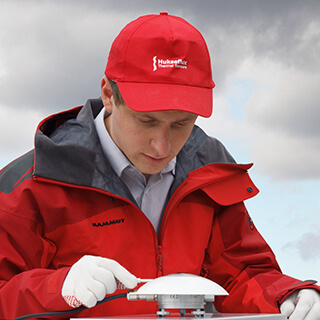
for application.
In meteorological terms, pyrgeometers are used to measure downward and upward longwave irradiance. Irradiance is the amount of radiation an object receives. This irradiance measurement can be useful in climatological and general networks in meteorology to monitor the weather, and more long-term the climate. The Hukseflux IR20 pyrgeometer is qualified for use in extreme climates, like polar or tropical regions. Another application can be found in agriculture. Here, pyrgeometers are used in networks to detect frost.
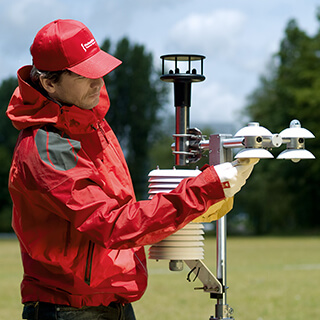
typical meteorological station.
When combining pyrgeometers with different sensors, other irradiance measurements can be performed as well. To measure shortwave radiation, a pyranometer is added to the pyrgeometer. Shortwave radiation is part of the visible and near-infrared electromagnetic spectrum and has a shorter wavelength. When combining two pyrgeometers with two pyranometers, they form a net radiometer (for example, Hukseflux’s NR01 net radiometer). This combination of sensors is used during surface flux measurements to attain a more complete image of radiation received on earth.
Pyrgeometers also provide values other than heat flux. Pyrgeometers can provide values beyond heat flux. To achieve this, one assumes that the sensor reflects all incoming radiation. Based on the measured data, it becomes possible to calculate either the sky or surface temperature.
How does a pyrgeometer work?
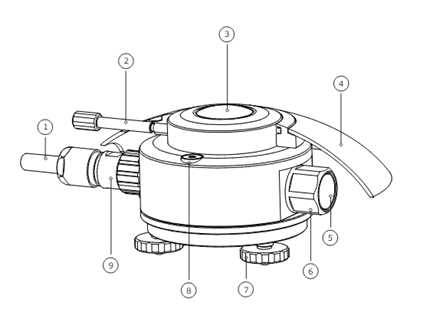
The design of the IR02 pyrgeometer is similar, but simpler.
The purpose of a pyrgeometer is to measure longwave radiation, excluding solar radiation. During longwave irradiance measurements, it should not show discrepancies for different wavelengths. To ensure the result is accurate, multiple components are added to the design of the pyrgeometer.
First of all, the actual sensor is located underneath a silicon dome with a solar blind filter (number 3 in the image). The silicon dome itself already blocks a part of the solar radiation. The solar blind interference coating on top of the dome cuts off more wavelengths, so only longwave radiation remains.
Furthermore, the thermal sensor inside of the silicon dome has a black coating to absorb the longwave radiation. It transfers the radiation to heat, which can be measured as conductive heat flux in the sensor body. The thermopile sensor located in the sensor body converts heat to a voltage that can be measured. Out of this measured voltage, the heat flux can be calculated. The sensor also emits radiation as a blackbody, because it has a black surface.
More information on the radiation between two bodies can be found in the article Solar radiation measurement.
Hukseflux’s pyrgeometers
Hukseflux currently offers four different pyrgeometers. These can be divided into two categories. The IR20 or IR20WS pyrgeometer and the IR02 or IR02-TR pyrgeometer. These pyrgeometers are suitable for measuring sky and surface temperature. They are equipped with an on-board heater. The heater prevents condensation to avoid large measurement errors. The last feature they have in common is their high sensitivity. When provided with a good input signal, the data logger no longer significantly contributes to the measurement uncertainty.
Next, we will explain what differences there are between the types of pyrgeometers Hukseflux offers. The table below provides a better overview. The specifications of the IR02-TR are the same as those of the IR02.
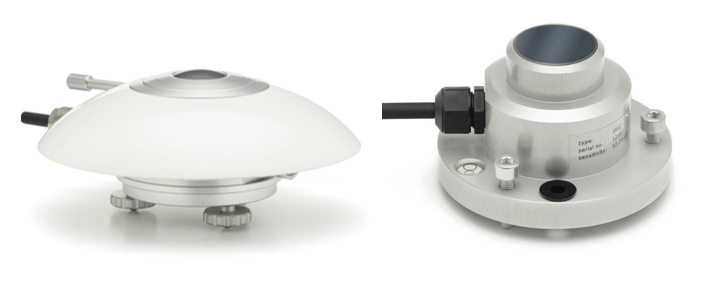
Table 1 Differences between the IR20, IR20WS and IR02 pyrgeometers.
| Specifications | IR20 | IR20WS | IR02 |
| Spectral range | 4 500 to 40 000 nm | 1000 to 50 000 nm | 4 500 to 42 000 nm |
| Measurement range | -1000 to +1000 W/m² | -1000 to +1000 W/m² | -300 to +300 W/m² |
| Temperature dependence | < ± 0.4 % (-30 to +50 °C) | < ± 0.4 % (-30 to +50 °C) | < ± 3 % (-10 to 40 °C) |
| Field of view angle | 180 ° | 180 ° | 150 ° |
| Response time (95 %) | 3 s | 3 s | 18 s |
We start with the IR20 and IR20WS pyrgeometers. These are research grade sensors, which we offer at a significantly lower price than competing models of the same performance level. The IR20 has a solar blind filter that cuts out solar radiation. This makes the sensor suitable for measuring during the day, but measurement is also possible during the night. The IR20WS has a wider spectral range, which means it measures more wavelengths. The range of wavelengths expands to the smaller wavelengths. Because of this, it is only more accurate during the night when there is no solar radiation. As seen in Table 1, the response time of the sensor is low. A lower response time makes the sensor functional on moving objects like buoys or aircrafts. The wide measurement range for heat flux also makes these sensors ideal in extreme environments.
The IR02 is a more economical option when a less accurate measurement is acceptable. The temperature dependence is higher, and both the field of view and the measurement range are smaller. It is a smart choice in less extreme environments or as a warning system for frost. The only difference with the IR02-TR, is the 4-20 mA transmitter. That transmitter in the IR02-TR makes the read-out easier.
How did we create a more accurate pyrgeometer?
The goal while designing the IR20 pyrgeometer was to make a more accurate sensor. To achieve this accuracy, there had to be a reduction of temperature dependence. This temperature dependence is because of the thermopile. The solution? Determine the temperature dependence of the thermopile! If you enter the determined coefficients into the measurement equation, a more accurate result is obtained. These coefficients are provided with the pyrgeometer. The temperature dependence decreases to less than 0.4 % between -30 and 50 °C, as seen in Table 1.
The second result of this development is the lower price. Hukseflux has invested in facilities for the calibration, allowing for fast and accurate work. Both these innovations resulted in a research-grade pyrgeometer.
To ensure this pyrgeometer had the same level of operation as other premium brand pyrgeometers, it was tested and compared to the competing models. Results are represented in the following graph.
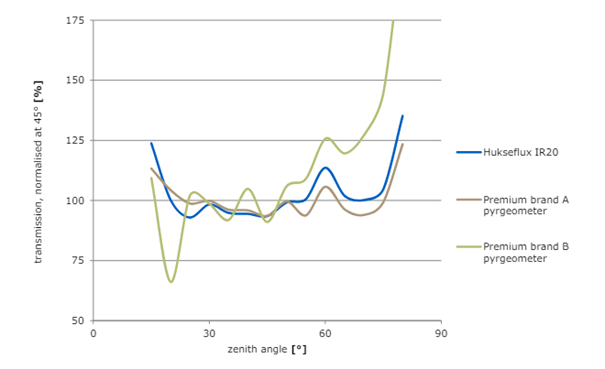
the directional response of other competing premium brand pyrgeometers.
Conclusion
Pyrgeometers measure longwave radiation. As you can read in this article, they have diverse applications. From surface flux measurements in meteorology to frost detection in agriculture, many things are possible. Hukseflux offers four types of pyrgeometers to help achieve the best results for irradiance measurements. Need assistance or more information while choosing the best sensor for your application? Contact us at Hukseflux!







